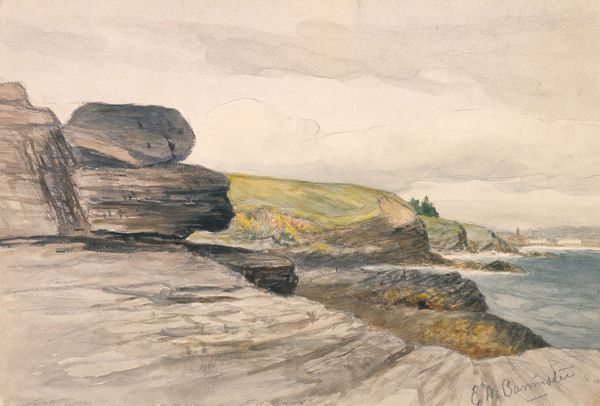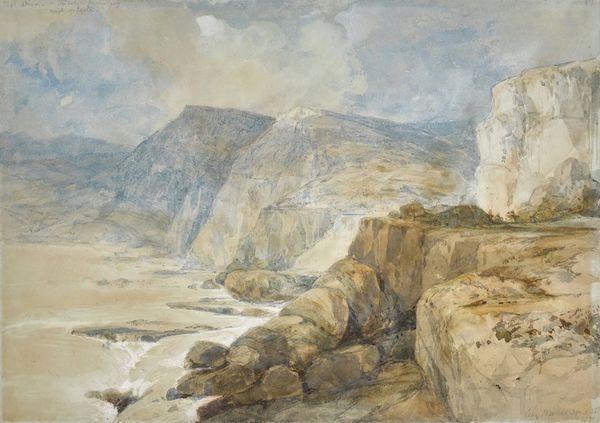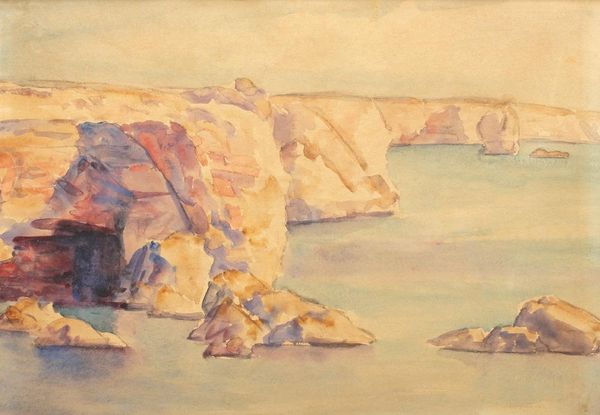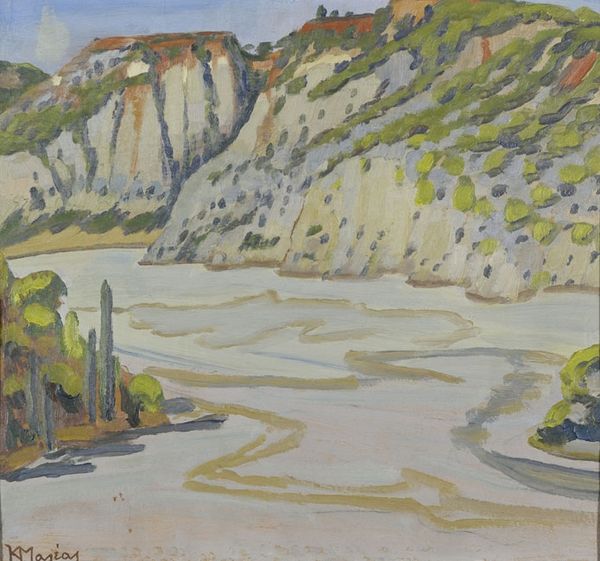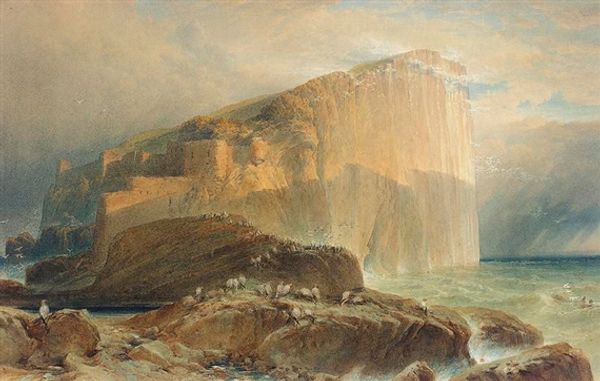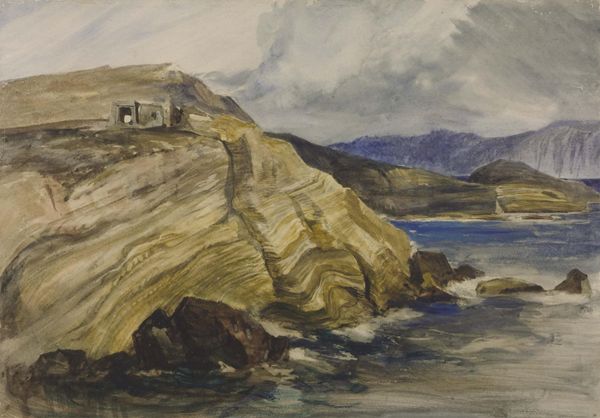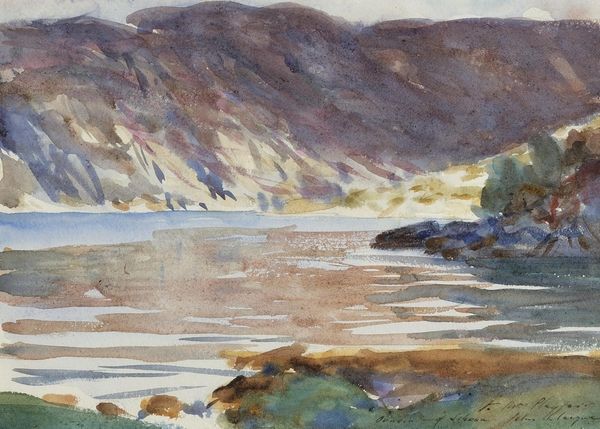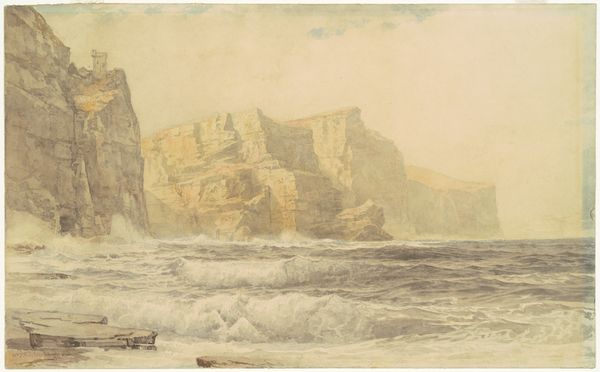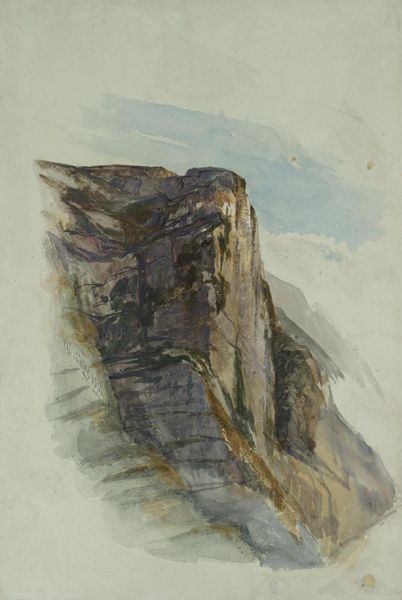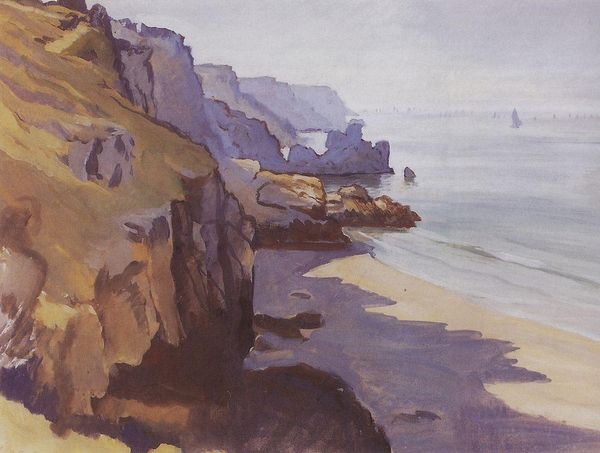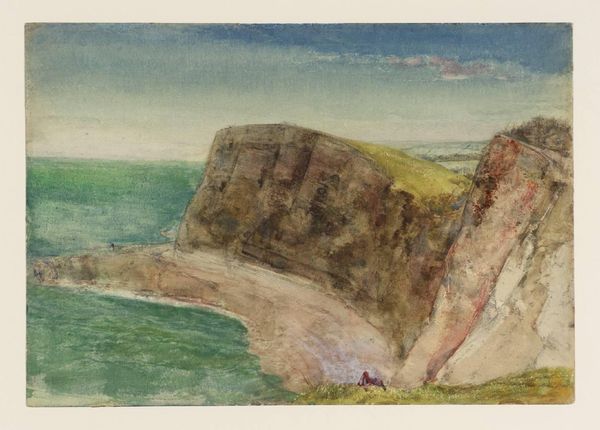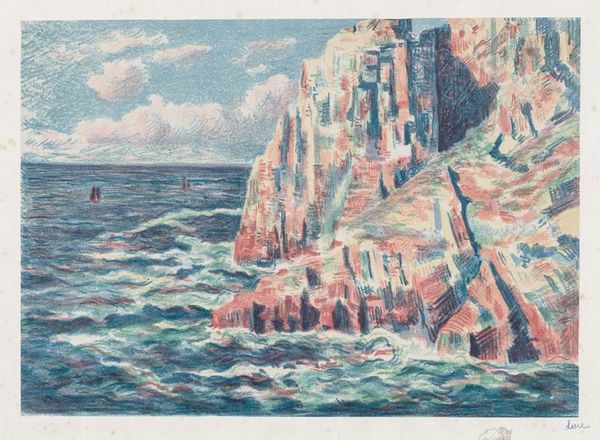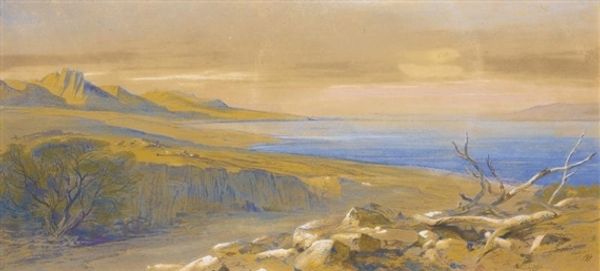
Copyright: Public domain
Editor: We’re looking at Julian Ashton’s "Terrigal Headland, New South Wales," created in 1892. I’m struck by the almost ghostly quality of the light, how it softens the cliff face. What story does this landscape tell you? Curator: It whispers tales of the transient and the eternal. I see Ashton wrestling with the monumental presence of nature – the unyielding cliff face – but he captures it with fleeting washes of watercolour, a medium inherently suggesting temporality. Notice how the rock formation almost resembles a human profile gazing out to sea, perhaps reflecting the artist's own sense of contemplation. It’s as though he's searching for permanence within a world that's constantly shifting. Don't you think? Editor: That’s a great point about the human-like quality! I was so focused on the Impressionistic style that I missed the more Romantic undertones, you know, the sublime in nature. How does knowing this was painted *en plein air* shift our understanding? Curator: Painting *en plein air*, in open air, adds another layer, doesn't it? The artist is battling the elements, trying to capture the light as it truly is, not as it is perceived from the comfort of the studio. There is something so raw and visceral about that immediate encounter. I bet he felt a similar pressure to convey the experience vividly and succinctly! Editor: That makes the impermanence make so much sense – not only with the medium, but the circumstances. I'll think of this one as less “ghostly” and more "urgent," I suppose. Curator: Urgent, yes, precisely! It’s a record of a fleeting moment. Art often rewards a second look. A piece reveals something new each time. It is a dialogue, no? Editor: I agree. Thank you.
Comments
No comments
Be the first to comment and join the conversation on the ultimate creative platform.
